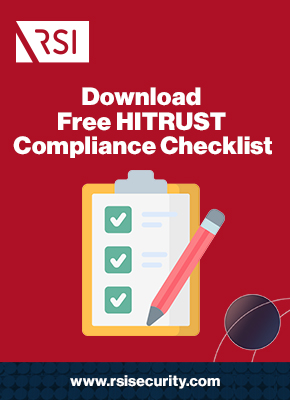The HITRUST Alliance has revolutionized cybersecurity and compliance practices with its comprehensive, streamlined CSF framework. Businesses across industries have implemented HITRUST—or are in the process of doing so—for maximum security at minimal costs. But is HITRUST certification for small businesses and private individuals the same as it is for larger enterprises?
HITRUST Certification for Individuals and for Businesses
The most significant differences between HITRUST certification for individuals and businesses involve the gulf between their respective reasons for achieving HITRUST certification. The sections below address niche cases in which individuals would consider getting certified, then the appeal of HITRUST to larger businesses. One critical similarity applies across all instances: how to implement the HITRUST CSF, whether you’re a sole proprietor or a booming enterprise.
HITRUST Individual Certification: Who Needs it, and Why?
Cybersecurity measures vary widely between individuals securing their homes and businesses securing their (and their clients’) assets. Namely, individuals do not typically face regulatory or other requirements; they usually don’t have to implement robust controls as businesses do.
This all amounts to most individuals not even needing to consider HITRUST certification.
However, individuals who operate small businesses like sole proprietorships or one-person LLCs may need to meet legal requirements for cybersecurity. Absent these circumstances, they may need to satisfy industry or client demands for data protection. Therefore, implementing the HITRUST CSF is an efficient way to secure data and prepare for future compliance requirements across industries.
Request a Free Consultation
Healthcare Compliance Requirements and HITRUST Certification
One of the biggest reasons individuals consider HITRUST certification is if they work as a contractor, vendor, or another type of strategic partner with healthcare or adjacent organizations. This is because the Health Insurance Portability and Accountability Act of 1996 (HIPAA) applies to all covered entities within the field, along with their business associates—regardless of their primary industry or activity.
If your small business works with a doctor’s office, hospital, or other covered entity, you may need to sign a contract guaranteeing HIPAA compliance. HITRUST is designed to streamline compliance across many different frameworks, with a particular emphasis on HIPAA. In addition, the most recent CSF (version 9.5.0) added specifications to make HIPAA compliance faster and easier.
HITRUST certification can help you land contracts with healthcare clients more easily and often.

HITRUST Certification for Small Businesses and Enterprises
Individuals and the smallest businesses are less likely to seek out HITRUST certification, but larger enterprises across nearly every industry can benefit from implementing the CSF. This is because HITRUST offers one of the most robust frameworks for all-around cybersecurity.
For a sense of how comprehensive the CSF is, consider the range of its 14 Control Categories:
- Category 0.0 – Concerning company-wide information security management programs
- Category 01.0 – Governing access control measures to monitor and restrict data access
- Category 02.0 – Ensuring secure human resources practices (e.g., onboarding, training)
- Category 03.0 – Governing overall management of all vulnerabilities, threats, and risks
- Category 04.0 – Concerning specific policies for the protection of sensitive information
- Category 05.0 – Governing the internal and external organization of information security
- Category 06.0 – Concerning compliance with all legal and other applicable regulations
- Category 07.0 – Ensuring secure management of all physical, virtual, and other assets
- Category 08.0 – Comprising physical safeguards for all environments and equipment
- Category 09.0 – Governing security management for communications and operations
- Category 10.0 – Concerning acquisition, development, and maintenance of all systems
- Category 11.0 – Governing overall management of attacks and other security incidents
- Category 12.0 – Ensuring seamless business continuity in the face of security threats
- Category 13.0 – Defining specific practices and responsibilities pertinent to data privacy
This all-encompassing framework is used primarily within the US, but it compares favorably to omnibus frameworks used worldwide, such as ISO 27001. While it is not presently required by any federal or state law, certain business relationships may necessitate HITRUST certification.
For example, within the US healthcare sector, HITRUST has become a gold standard beyond HIPAA (which HITRUST covers in its entirety). Major payers within the healthcare industry have explicitly required HITRUST certification from companies they work with since 2016. And, critically, HIPAA is just one of the many regulatory frameworks HITRUST covers.
How HITRUST Streamlines Security for Businesses of All Sizes
Across the Control Categories detailed above, the CSF details practices corresponding to both general cybersecurity objectives and specific requirements of various regulatory frameworks. As noted above, the current HITRUST update has taken steps to address HIPAA more easily.
But before that, version 9.4 (2020) took similar steps toward integrating controls for Department of Defense (DoD) contractors. Namely, HITRUST CSF v9.4, 9.4.1, and 9.4.2 introduced mapping for the Cybersecurity Model Maturity Certification (CMMC)—see RSI Security’s blog on HITRUST v9.4.
These are both examples of the HITRUST Alliance’s commitment to its Assess Once, Report Many principle. The HITRUST CSF is updated frequently with new controls to streamline overall compliance auditing and reporting processes. For growing companies especially, working with clients in new industries means rapidly adapting to new security standards. HITRUST implementations make compliance navigation more straightforward, manageable, and cheaper.

HITRUST Certification Process for Businesses and Individuals
Whether you are an individual, small business owner, or an executive of a large enterprise, the process of achieving and maintaining HITRUST certification is nearly identical. It requires full implementation of all HITRUST CSF controls, reporting on implementation, and re-assessing at regular intervals.
RSI Security’s HITRUST services break the process down across five steps:
-
- HITRUST CSF Gap Assessment – A preliminary, low-stakes audit identifies any architecture or programs you need to build out for full framework implementation.
- HITRUST CSF Implementation – Then, our experts will assist with or directly install controls needed for HITRUST certification, corresponding to the Control Categories.
- Validation of HITRUST Controls – A third party (like us) needs to verify all controls.
- Full HITRUST CSF Certification – After verification and any needed adjustments, verification results are submitted to the HITRUST Alliance for full certification.
- Maintenance and re-certification – Once certification is granted, it must be maintained through adjustments and re-assessments, accounting for new updates.
Note that the HITRUST certification duration covers a period of two years. This necessitates a full re-validation at the period’s conclusion, along with an interim assessment at the one-year mark. See HITRUST’s breakdown of assessment types and our HITRUST datasheet for more information.
Implementing the HITRUST CSF: Overview of Framework Core
The most intensive part of any HITRUST certification process is the initial implementation of all CSF controls. Organized within the Categories listed above, all Controls comprise the following:
-
- Control Objectives – The first sub-division within Control Categories, the Objectives or Objective Names (49 in total) identify specific goals for References and Specifications.
- References and Specifications – Control References are the name and number of specific practices, whereas Specifications (156 total) detail their particular requirements.
- Control Implementation Levels – Most References and Specifications break down into multiple Levels, which apply to different businesses based on their size and regulations.
Because of the varying implementation levels, the actual process of achieving certification will differ slightly for many businesses. But the baseline practice of scanning for implementation of all applicable Levels and Specifications, for all Control References, is the same for all parties.
RSI Security’s HITRUST Certification Advisory Services
RSI Security has facilitated HITRUST certification for small businesses—and enterprises of all sizes—for over a decade. Whether you are a growing startup or a multinational corporation, we will help you optimize your cybersecurity ROI.
To get started on certification, contact RSI Security today!
Download Our HITRUST Compliance Checklist
Assess where your organization currently stands with being HITRUST compliant by completing this checklist. Upon filling out this brief form you will receive the checklist via email.

